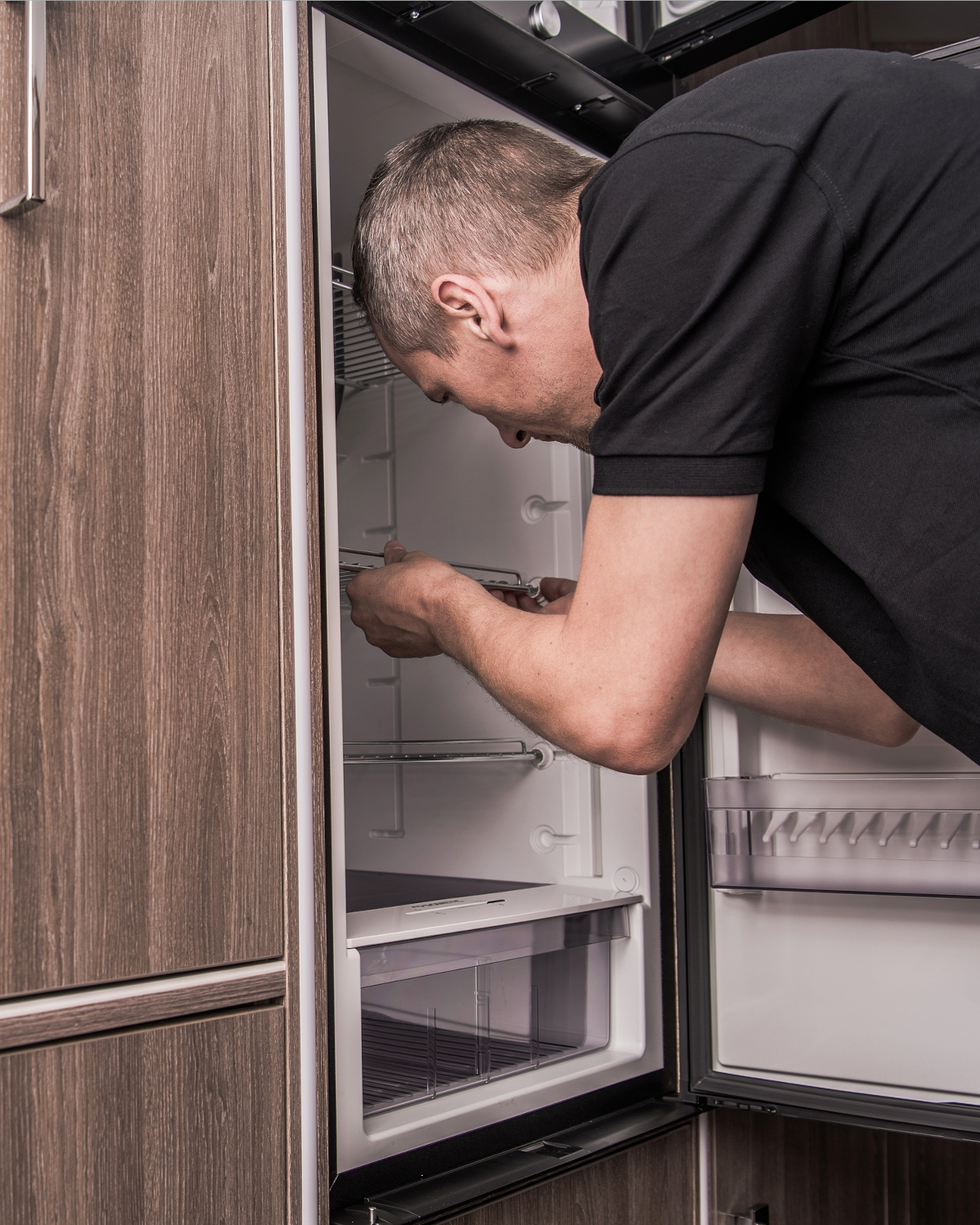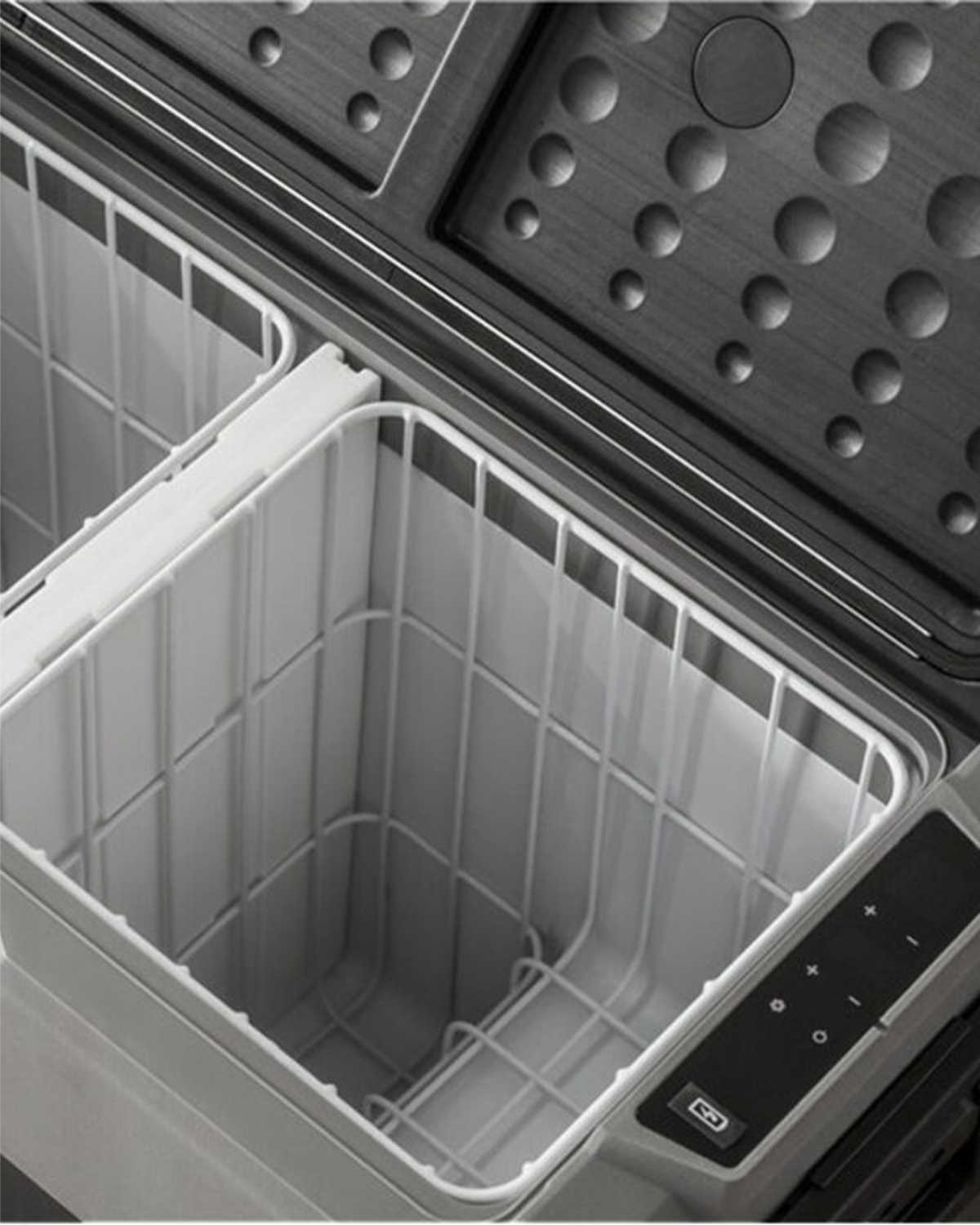Finding the fastest ways to cool your RV refrigerator can help you get on the road faster while keeping your food at a safe temperature.
The fastest ways to cool an RV refrigerator are:
- Cooling it while empty
- Using bags of ice
- Utilizing a fridge fan
Beyond cooling your RV refrigerator quickly, you should also take the time to make sure it stays cool. In this article, we explore the methods for faster cooling and keeping your refrigerator cool, as well as answer some of the most frequently asked RV fridge questions.
How to Cool Your RV Refrigerator Faster
Cooling your RF refrigerator faster helps you get moving earlier, but it also gives you plenty of time to move food over or make sure any food you buy can be stored properly.
You should start by ensuring your RV fridge works properly. These methods may help a damaged fridge, but you run the risk of the cooling system failing and losing all your perishable food.
Empty it Out
Make sure your camper’s refrigerator is empty before you start to cool it. You don’t want to start by filling it with items running below the optimal refrigerator temperature; these items slow the cooling process as they take more energy to cool on top of cooling the air.
Items in the refrigerator also inhibit the flow of air necessary to cool the inside of the fridge.
Put Bags of Ice in Your RV Fridge
The only exception to hosting items in the refrigerator to cool them faster is putting bags of ice inside. Because the ice is cooler than the target temperature of the fridge, it does not require cooling and actually contributes to the cooling process.
Alternatively, you can use other variations of ice, such as:
- Frozen water bottles
- Ice packs
- Pre-cooled items
This can cut the time needed to cool your RV fridge and ensure it reaches the optimal temperature at the right time.
Use a Fridge Fan Inside Your RV Fridge
A dedicated RV fridge does not have a compressor like a residential fridge, and it instead relies on airflow to reach the optimal temperature.
You can purchase an RV fridge fan for a small fee. These are easy to use, and they do not take up much space on the inside of your refrigerator. Fridge fans help move the air on the inside of the fridge, leading to shorter cooling times.
Ways to Keep Your RV Refrigerator Cold
Once you get your RV fridge to the right temperature, it is important to maintain the temp. This keeps your food safe to consume and ensures you have cool items to eat while in your RV.
Level Your RV
Gravity has a major impact on the operations of your RV fridge, and leveling your RV allows gravity to work properly to pull materials in the right direction for cooling.
An RV that is not level inhibits this movement, and it can be dangerous when working with a gas-powered refrigerator. These appliances may be cut off prematurely, and gas should be treated more carefully.
Check with your fridge manufacturer to see how much room for error you have when leveling your RV for optimal cooling. Some allow as much as 3 degrees side-to-side and 6 degrees front-to-back.
Promote Good Airflow
Keep in mind that the fridges rely heavily on airflow to keep cool. Because they do not have a built-in circulating fan, you need to do the heavy work to promote proper airflow.
RV fridges have cooling blades at the top that slowly cool the surrounding air. Air sinks as it cools, and the warm air at the bottom will rise to take that place.
Make sure you do not block airflow by packing the fridge too full and be mindful of any vents inside the refrigerator. This prevents uneven cooling and hot spots in the refrigerator.
Ensure all the fans on your RV fridge work properly, and consider installing a vent fan if you do not have one yet.
Turn On the Fridge 24 Hours Before Leaving
Make sure you give your fridge at least 24 hours to cool before you leave. While most refrigerators take 4 to 6 hours to cool, 24 hours ensures you reach the optimal temperature for any trip.
You should not stock your shelves until right before you leave, but make sure you do this before your fridge loses power. It is easier to keep a full fridge cool than trying to maintain the temperature of an empty one.
Maintain 12-Volt House Power
The most powerful and reliable source of power for your RV fridge is 12V shore power. Try to stay hooked to shore power when possible, and make sure your house batteries are fully charged to power your fridge.
Even when you use shore power, check in to make sure your AC power battery operates properly. Any disruptions in power can lead to disaster if not caught early on.
Keep RV Refrigerators Door Closed
You lose a decent amount of cool air each time your RV fridge door opens, and this only increases with the amount of time spent open.
By limiting the number and amount of time the refrigerator door is open, you can keep it much cooler. Make sure you know what you want before opening it.
An easy way to help this is by keeping an inventory on the outside of the fridge. A dry-erase board is easy to update as you pull items out.
Make sure your fridge is properly organized, so it’s easy (and fast) to find the items you need.
Shade the Fridge Side of the RV
Not only will sunny days force your RV fridge to work harder, but you can improve efficiency in general by keeping the fridge side cool.
You can determine your fridge location on the outside by locating two removable vents (it might not be where you think it is).
At the least, try to keep this area of your RV, if not the whole RV, in the shade when you park. You can also use an awning on this side to offer shade or work with a combination of the two.
Stock with Cold Products
Just like ice helps speed up the cooling process, stocking your fridge with as many cool items to start is an easy way to keep it cool. Pairing this with a fridge fan works great.
If you can, put them in your residential refrigerator before you leave your home. This ensures your fridge is full before you leave, and it lets you start with cool items.
When picking up items at the store, shop in the cold section or pick items in the cooler. Keep in mind that some stores charge more for cooler items.
Your goal is to load perishable items at their optimal temperature of 40°F.
Purchase Ice as Needed
It takes even more energy to freeze items, and it’s easy to run through ice in your RV. When possible, purchase ice instead of waiting for your RV fridge to make it.
When planning your trip, check to see if your campground offers ice on-site or if you need to buy some beforehand. You may need to plan ahead and find an easy-to-access retailer.
Refrigerate Cooled Leftovers
Just like your residential fridge, make sure your leftovers cool to room temperature before you put them in the refrigerator.
In certain cases, loading hot food in the fridge can cause other food to spoil. In an RV fridge, this leads to a major draw on energy, and you would expect short-term negative effects on fridge efficiency.
Monitor the Fridge Temperature
While some RV fridges have a temperature gauge, most do not. Even those that do tend to have it sit on the inside.
You can purchase an inexpensive temperature gauge to keep inside your RV fridge and monitor the temperature. These thermometers come with a readout monitor that you can keep in your galley area, either on a shelf or table or by mounting them to the wall. Some even hook up to your phone for more portable monitoring.
This allows you to check on the fridge without opening the door to make sure it operates correctly. You can also track trends in performance, such as how cool it stays during the heat of the day.
Many monitors allow you to set alarms if the temperature ends up below a certain mark, either through the readout or phone app. This alerts you when the fridge is no longer cooling properly, and you can address the issue immediately by saving your food and fixing the problem.
Defrost the Refrigerator Regularly
Make sure you defrost the fridge any time ice builds up, even in the ice section. The cooling cables located in this area should be able to radiate their cool temperature.
Allowing ice to build up has negative impacts on your fridge performance over time, and it can also prevent your door from sealing properly.
Inspect the Door Seal
The door seal keeps all the cool air inside the fridge, preventing the refrigerator from needing to cool the air constantly. If cold air leaks out, the refrigerator needs to work harder and spend more time replacing it.
Air leaks also lead to an accumulation of ice within your RV fridge, reducing the efficiency in the ways discussed above.
Inspect the door seal often to catch onto any issues early on. An easy way to do this is by shutting a dollar in the door. It should not slide out easily.
Make sure you replace it as soon as you notice any damage or what appears to be excessive wear.
FAQs
How long does it take for an RV fridge to cool down?
It can take as little as 4 to 6 hours for the fridge to cool or as much as 24 hours. This is why it is essential to give your RV fridge around 24 hours to cool before you need to move it anywhere.
Other things that impact this time include:
- The surrounding temperature of the fridge
- How full the fridge it
- The temperature of items in the fridge
Your fridge may struggle to cool if it has damaged components. Tracking cooling time can help you notice these problems.
Does an RV refrigerator work better on gas or electric?
Most RV owners prefer electric operation to gas for a fridge, but there are benefits and downsides to each fueling method.
Gas cools the fridge faster, and these fridges operate cooler, but it fluctuates more with outside temperature and stops working if not correctly leveled. Gas is also a volatile substance, and your lines have higher flammability and risk of fire.
Electricity is generally safer when used correctly, but it cools slowly. Once you reach optimal temperature, electricity is more efficient at keeping it cool. You can also use a solar panel to maintain electricity in your RV fridge.
How long does an RV fridge stay cold without power?
Expect an RV fridge in proper running condition to stay cool for up to 12 hours. Again, this time varies depending on several factors.
To keep your RV fridge cooler when without power, make sure you:
- Keep it full (but not overfilled)
- Only storing cold items
- Keeping the fridge closed
- Connecting to the battery when sitting
A thermometer is helpful in these moments because it assures you that the fridge does not get too hot when transporting perishable food. You also know when to throw food out because the fridge failed to keep it cool.
Conclusion
Finding the fastest way to cool your RV can help you cool it down when you need it most, and you can get going with cold food sooner than expected. None of these methods require fancy tools, and most of them go hand in hand with proper refrigerator usage.
Cold food is one of those things that we miss, even when we want to get away, and an RV fridge helps bring that comfort along with us.
Angela Devaney

Angela Devaney, a former IT project management professional, embarked on an adventurous journey of full-time travel, which included touring West Africa in a converted overland truck and converting an ex-military 4×4 Sprinter van into a camper for a five-year South American expedition. She now utilizes her hands-on experience to create practical RV living and van life advice as a full-time digital media producer, reaching over a million users annually through her YouTube channel, blog, and newsletter. Angela also lends her expertise as the editor-in-chief of the Campervan Electrics Handbook.



